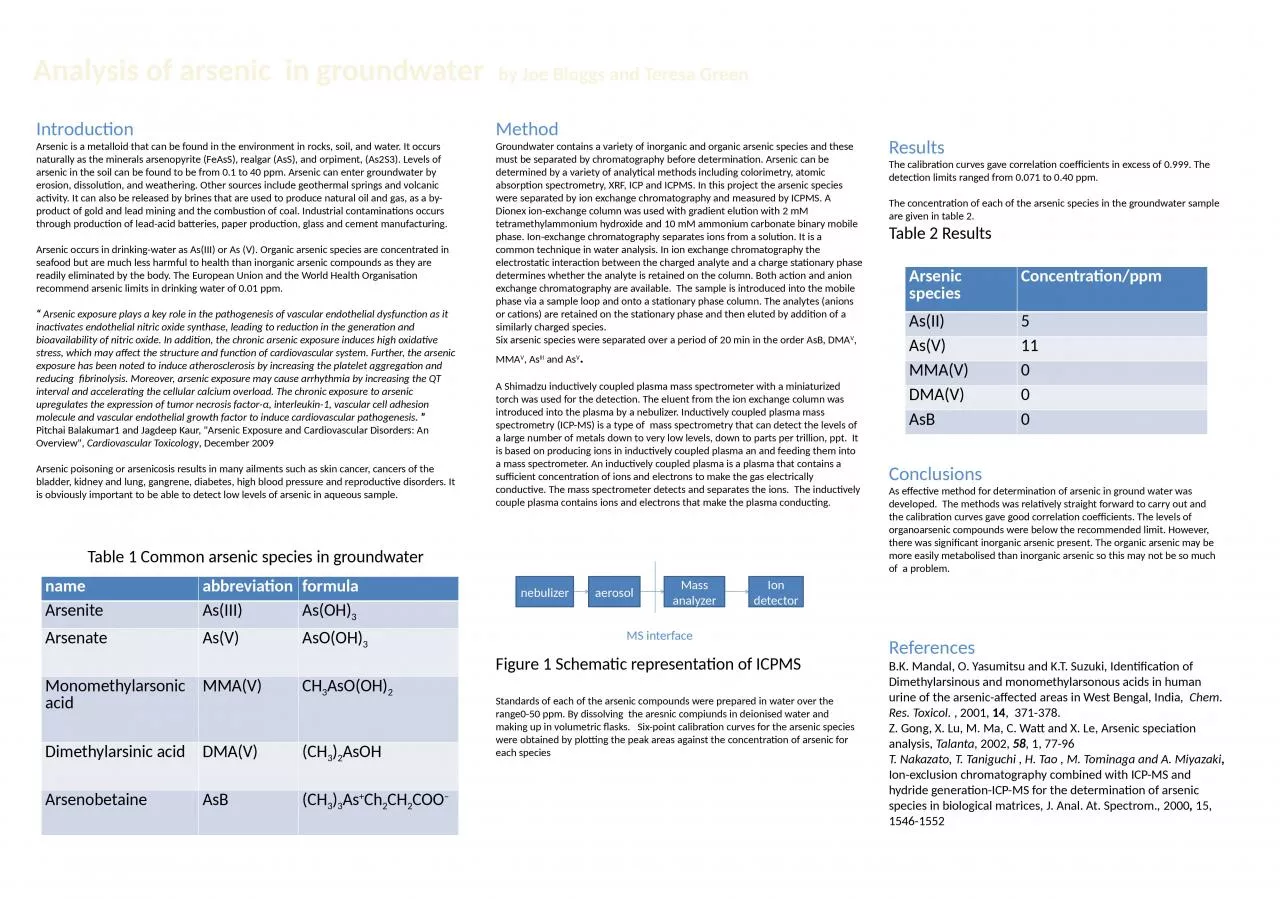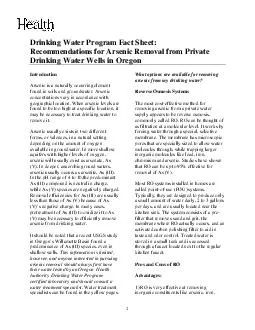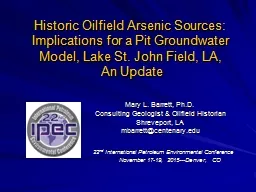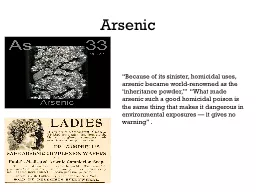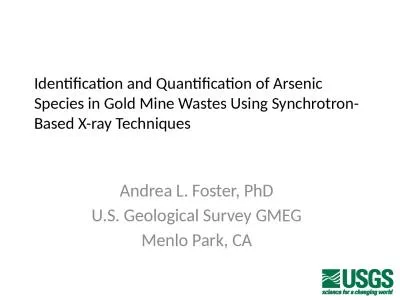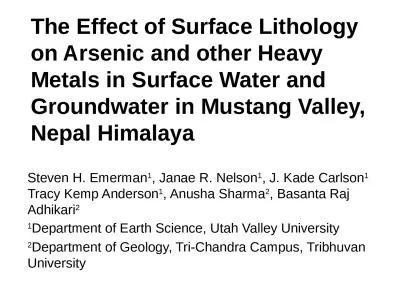PPT-Analysis of arsenic in groundwater
Author : white | Published Date : 2024-01-03
by Joe Bloggs and T eresa Green Introduction Arsenic is a metalloid that can be found in the environment in rocks soil and water It occurs naturally as the minerals
Presentation Embed Code
Download Presentation
Download Presentation The PPT/PDF document "Analysis of arsenic in groundwater" is the property of its rightful owner. Permission is granted to download and print the materials on this website for personal, non-commercial use only, and to display it on your personal computer provided you do not modify the materials and that you retain all copyright notices contained in the materials. By downloading content from our website, you accept the terms of this agreement.
Analysis of arsenic in groundwater: Transcript
Download Rules Of Document
"Analysis of arsenic in groundwater"The content belongs to its owner. You may download and print it for personal use, without modification, and keep all copyright notices. By downloading, you agree to these terms.
Related Documents

